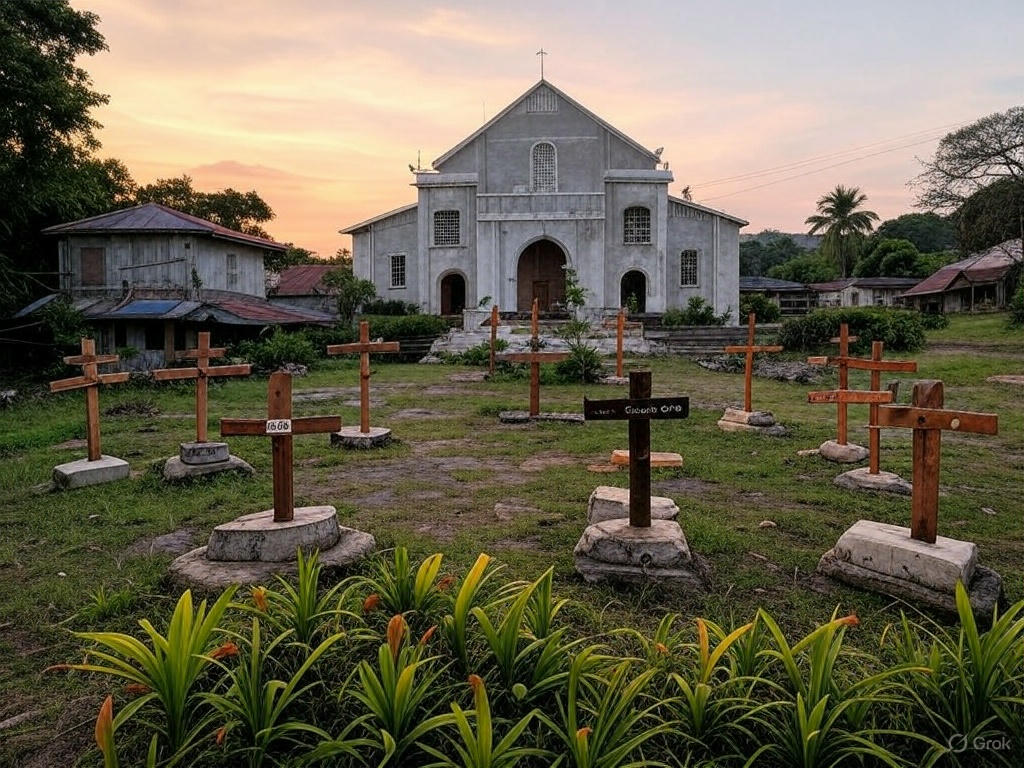
The “14 Stations of the Cross Prayers” in Tagalog offer a powerful way to journey with Jesus through His Passion. For Filipinos, this devotion is a blend of faith, culture, and language, making it a cornerstone of Lenten observance. Whether prayed in a quiet chapel or amidst a bustling Good Friday procession, the Sampung Apat na Istasyon ng Krus invites all to reflect on Christ’s love and sacrifice—a message that transcends borders and speaks to the heart in any tongue.
The 14 Stations of the Cross Prayers: A Devotional Journey in Tagalog
The Stations of the Cross, known as “Via Crucis” or “Way of the Cross,” is a cherished Christian devotion that commemorates the Passion of Jesus Christ—His journey from condemnation to crucifixion and burial. This practice, consisting of 14 stations, is observed worldwide, particularly during Lent and Holy Week. In the Philippines, a predominantly Catholic nation, the devotion holds deep significance, often prayed in local languages like Tagalog, enhancing its emotional and spiritual resonance for Filipino faithful.
For Tagalog-speaking Catholics, the “14 Stations of the Cross Prayers” or “Sampung Apat na Istasyon ng Krus” is not just a ritual but a profound expression of faith, penance, and solidarity with Christ’s suffering. This article explores the 14 stations, their meaning, and how they are prayed in Tagalog-speaking communities.
The 14 Stations of the Cross
Each station represents a moment in Jesus’ final hours, inviting reflection, prayer, and repentance. Below is a list of the 14 stations with their Tagalog translations and a brief explanation:
Jesus is Condemned to Death
Tagalog: “Si Hesus ay Hinatulan ng Kamatayan”
Pilate sentences Jesus to death, marking the beginning of His sacrificial journey.
Jesus Carries His Cross
Tagalog: “Si Hesus ay Nagpasan ng Kanyang Krus”
Jesus accepts the heavy cross, symbolizing the burdens we carry in life.
Jesus Falls the First Time
Tagalog: “Si Hesus ay Natumba sa Unang Pagkakataon”
Weakened, Jesus stumbles, reminding us of human frailty.
Jesus Meets His Mother
Tagalog: “Si Hesus ay Nakipagkita sa Kanyang Ina”
Mary’s sorrowful encounter with her Son reflects a mother’s love and pain.
Simon of Cyrene Helps Jesus Carry the Cross
Tagalog: “Tinulungan ni Simon ng Cirene si Hesus sa Pagpasan ng Krus”
Simon’s assistance teaches us to help others in their struggles.
Veronica Wipes the Face of Jesus
Tagalog: “Pinunasan ni Veronica ang Mukha ni Hesus”
A compassionate act leaves Jesus’ image on her cloth, a symbol of kindness.
Jesus Falls the Second Time
Tagalog: “Si Hesus ay Natumba sa Ikalawang Pagkakataon”
Despite His resolve, Jesus falls again, showing perseverance amid suffering.
Jesus Meets the Women of Jerusalem
Tagalog: “Si Hesus ay Nakipagkita sa mga Babae ng Jerusalem”
Jesus comforts the weeping women, urging them to weep for their sins.
Jesus Falls the Third Time
Tagalog: “Si Hesus ay Natumba sa Ikatlong Pagkakataon”
Exhausted, Jesus falls yet rises, exemplifying resilience.
Jesus is Stripped of His Garments
Tagalog: “Si Hesus ay Hinubaran ng Kanyang Damit”
Stripped of dignity, Jesus endures humiliation for humanity’s sake.
Jesus is Nailed to the Cross
Tagalog: “Si Hesus ay Ipinako sa Krus”
The crucifixion begins, a pivotal moment of sacrifice.
Jesus Dies on the Cross
Tagalog: “Si Hesus ay Namatay sa Krus”
Jesus offers His life, completing His redemptive mission.
Jesus is Taken Down from the Cross
Tagalog: “Si Hesus ay Ibunaba Mula sa Krus”
His lifeless body is placed in Mary’s arms, evoking the Pietà.
Jesus is Laid in the Tomb
Tagalog: “Si Hesus ay Inilibing sa Libingan”
Jesus is buried, awaiting the glory of resurrection.
Praying the Stations in Tagalog
In the Philippines, the Stations of the Cross are often prayed in churches, homes, or during “Visita Iglesia” (church visits) on Good Friday. The prayers are typically recited in Tagalog to make them accessible and meaningful to the faithful. A common format includes an opening prayer, a meditation for each station, and a closing prayer. Here’s an example of how a station might be prayed in Tagalog:
Sample Prayer for Station 1: “Si Hesus ay Hinatulan ng Kamatayan”
Panimula (Opening): “Panginoong Hesus, kami ay nagtitipon upang alalahanin ang Iyong paghihirap. Tulungan Mo kaming maunawaan ang Iyong sakripisyo.”
Pagninilay (Meditation): “Sa unang istasyon, nahatulan Ka ng kamatayan kahit walang kasalanan. Turuan Mo kaming magtiis sa mga hindi makatarungang paghuhusga.”
Panalangin (Prayer): “Panginoon, bigyan Mo kami ng lakas na tanggapin ang mga pagsubok sa aming buhay, tulad ng Iyong ginawa.”
This pattern repeats for each station, often accompanied by hymns like “Stabat Mater” or Filipino Lenten songs such as “O Hesus, Hilumin Mo.”
Cultural Significance in the Philippines
For Tagalog-speaking Filipinos, the Stations of the Cross are more than a devotion—they’re a communal experience. During Holy Week, many participate in “Pabasa” (reading of the Passion) or reenactments like the “Senakulo,” where the stations come to life through drama. The use of Tagalog deepens the connection, allowing prayers to resonate with local idioms and emotions. Phrases like “Mahal na Panginoon” (Beloved Lord) or “Kordero ng Diyos” (Lamb of God) carry a tender, heartfelt tone unique to the language.